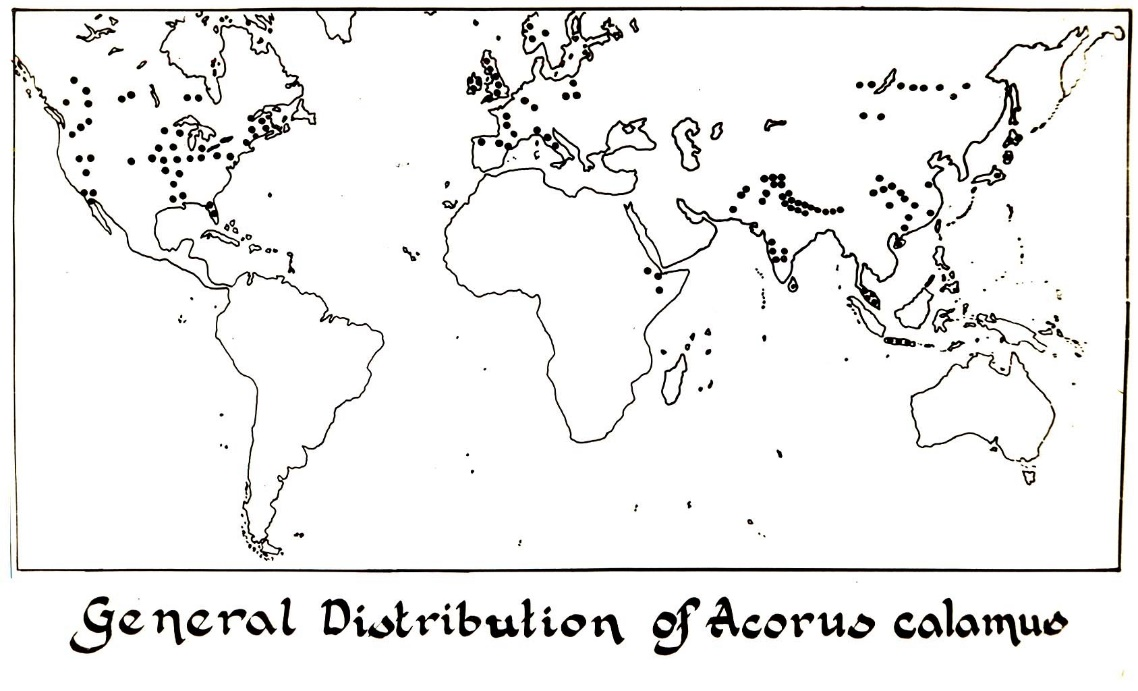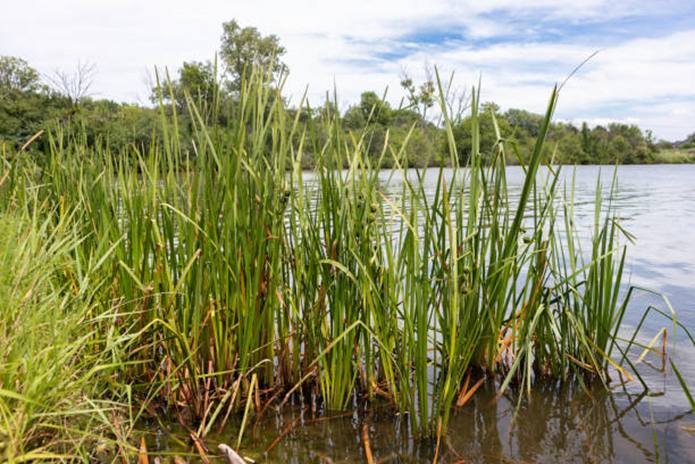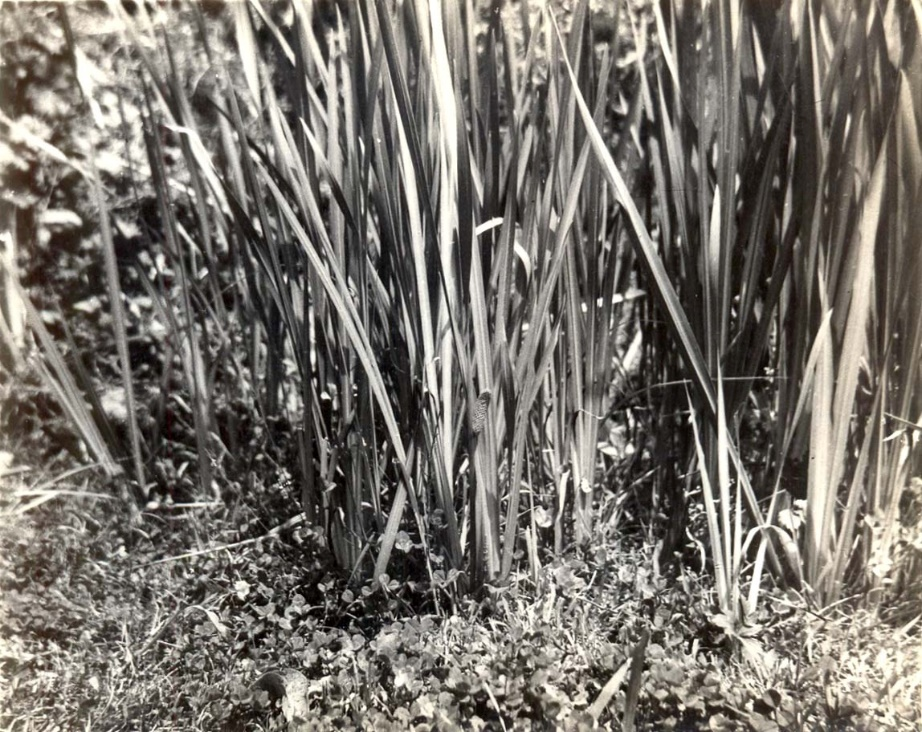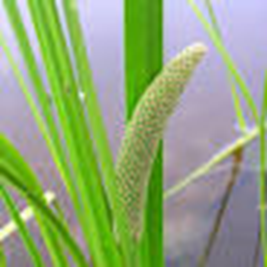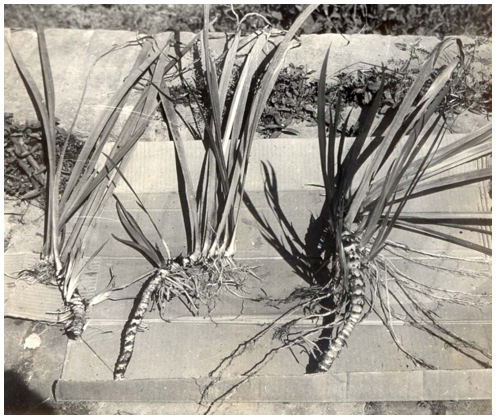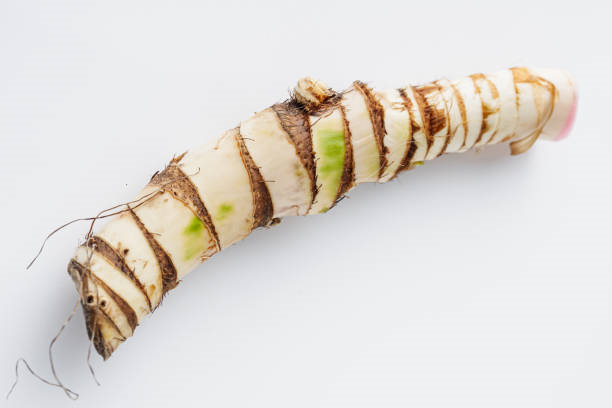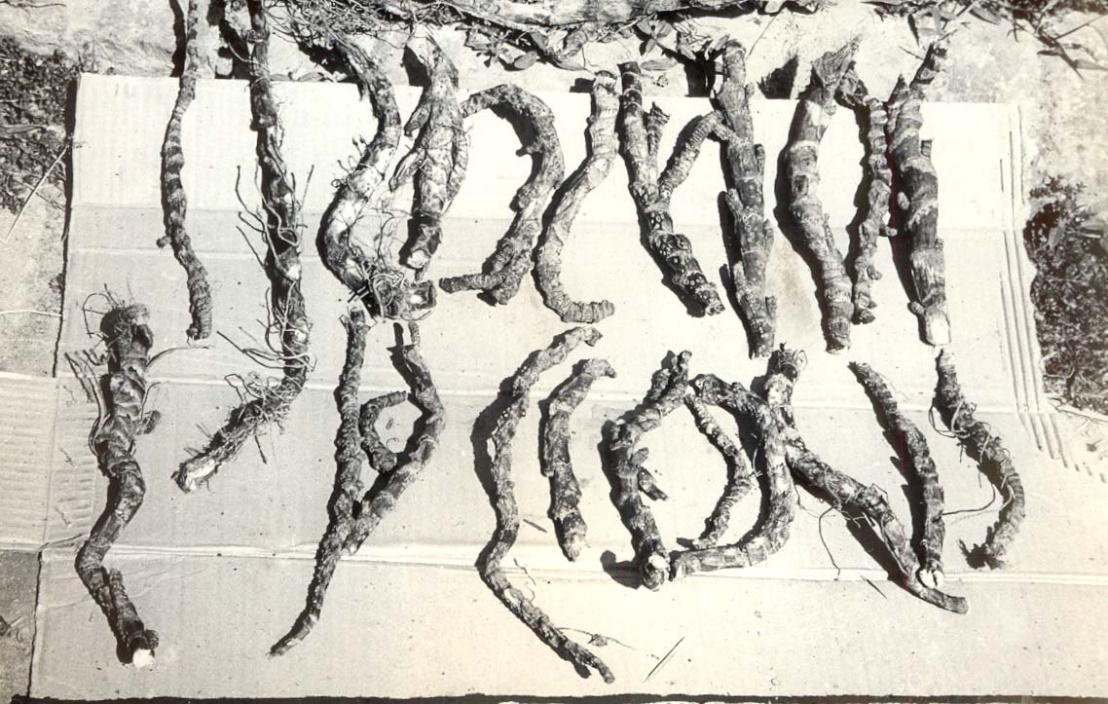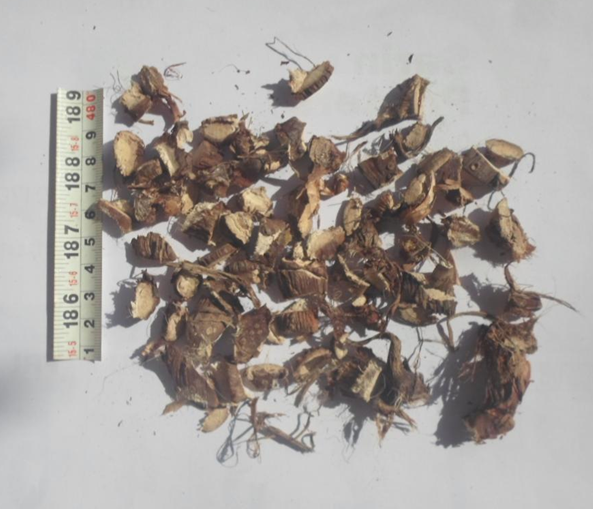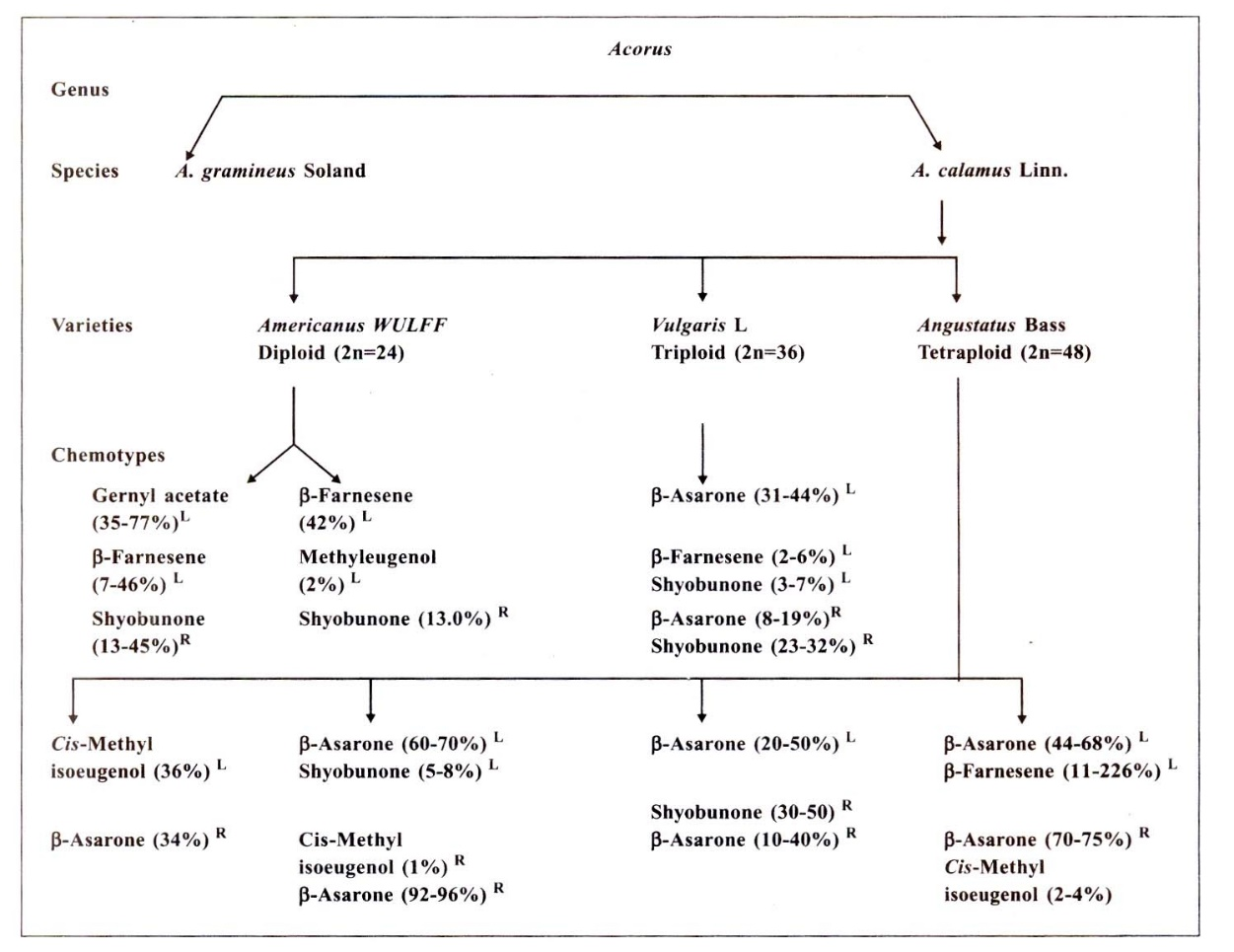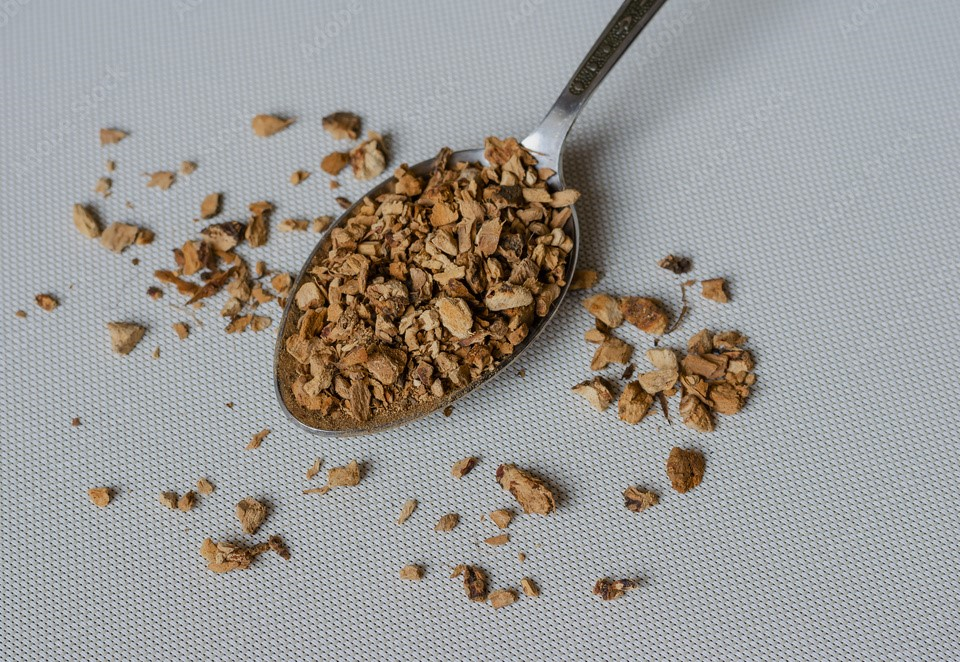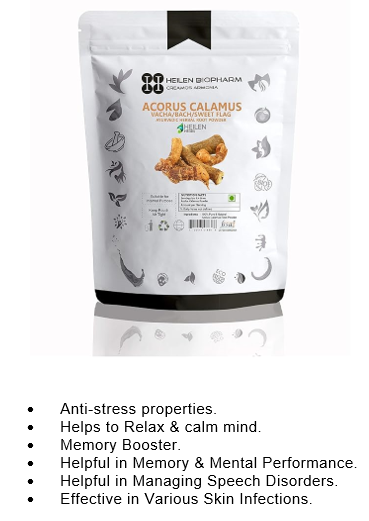Past Issues
The History of the Oldest Traditional Medicinal Plant Ever Known to Mankind: Sweet Flag (Vacha) Acorus Calamus L
Shah NC*
Retired Scientist CIMAP(CSIR), MS-78, Sector-D, Aliganj, Lucknow-226024, India
*Corresponding author: Shah NC, Retired Scientist CIMAP(CSIR), MS-78, Sector-D, Aliganj, Lucknow-226024, India, Tel: 91-9415310221, Email: [email protected]
Received Date: September 15, 2024
Publication Date: December 16, 2024
Citation: Shah NC, et al. (2024). The History of the Oldest Traditional Medicinal Plant Ever Known to Mankind: Sweet Flag (Vacha) Acorus Calamus L. Traditional Medicine. 5(3):31.
Copyright: Shah NC, et al. © (2024).
ABSTRACT For ages, people from all over the world have used the priceless medicinal plant Acorus calamus L. (Acroraceae) Sweetflag or Vacha to treat a variety of common illnesses and problems. It was traded by the Mesopotamian culture over 3,000 years ago. It is reported that during the British era in India, dealers of crude drugs were subject to fines if they failed to open their shops during the night to sell the vacha. This study covers the origin, botany, pharmacognosy, and distribution of the plant, especially in India and other European countries. In India and other nations, it is also part of the indigenous systems of medicine. Its uses from books written in Arabic and Persian have been translated and provided for the first time. Along with its applications, its chemoprofile, pharmacology, clinical trials, and insecticidal qualities have all been reviewed. Its collection, cultivation, economics in India, and taxonomy of variations and chemotypes are also included. The Atharvaveda, Vacha, is not mentioned; however, a plant is present under the name Auksgandhi. This has been equated with Vacha and the reason has been given.
Keywords: Asarone (α & β), Assyrian Herbals, ‘Aukshagandhi’, Boys Day, Bronchitis, Jalinoos, KitabulJame, Muhete-Azam, Navroj
INTRODUCTION
Acorus calamus L. (Acroraceae) has been used by man from times immemorial by the inhabitants of three continents, viz., Eurasia, Africa (Egypt), and America. The only record of man's first use of this plant dates back about 3000 years BC, when it was an article of commerce between India and Assyria (Mesopotamia) with other crude and aromatic drug plants as listed in Campbell's 'Thomson's Assyrian Herbals' like cinnamon (leaf and bark), ginger, pomegranate, calamus, sandalwood, and asafoetida found their way to Mesopotamia (Thorwald Jurgen 1962) [1]. It is well mentioned in Ayurvedic books like Carak, Sushurta, and Vagbhatta, but it is not mentioned in the Atharvaveda as Vacha. It was such an important health commodity in Indian society that in the past, according to a statement by Ainsley (1813) [2], "there is a penalty incurred by the druggist who will not, in the middle of the night, open his doors and sell it (Vacha) if demanded." Such was the importance of the plant in India.
In this communication, the origin of species, its total number, its distribution in the world and in India, and all its important aspects have been reviewed, along with its position in Atharvaveda
The Origin of the Species and its Distribution: It is stated, by Ridley (1930) [3] that the Acorus calamus originated somewhere in Siberia in Central Asia and North China, the main centre of the Mongoloid race. It is quite interesting to note that the present distribution of the Acorus calamus corresponds with the distribution of the Mongoloid race, leaving aside the well-documented recent introduction in Europe. However, according to Watt (1889-93) [4], the origin of the plant is Asia, stated to be near the Caspian Sea fortunately it is also the home of Aryans and as being medicinal where they moved they took it and thus brought to India. Tackholm & Drar (1950 [5], its original home is probably the Himalayas. However, it is now found throughout the world.
Figure 1. Map showing the general distribution of the plant Acorus calamus in the world.
Total number of species found in the world and India: In the world, five species have been reported. However, from India, two species have been reported, viz., Acorus calamus Linn. and A.gramineus Soland ex Ait. from Khasi Hills and Eastern Himalayas, Santapau & Henry (1973) [6].
Habit &Habitat: The plant is found in nature growing near ponds or small rivers or in marshy or wetlands. It is a semi-aquatic perennial herb up to 80 cm high with an indefinitely branched creeping and aromatic rhizome. The rhizome has stout joints 1-3 cm broad Root-stock is strongly aromatic stout, 1-3 cm broad, with fibrous roots. Stem- erect, glabrous. Leaves- ensiform or linear, normally 30--80 cm long, 0.8-1.5 cm broad and tapering into long acute points. Spathe- leaf-like, up to 45 cm. Spadix- 5.0-6.5 cm long, cylindrical, obtuse, 1.0-1.4 cm broad. In India particularly in the Himalayan region flowering & fruiting from June to July but it remains infertile so spreads by rhizome in nature (Vegetative propagation).
Parts of the plant used: Mostly- rhizome.
Figure 2. The plant is found in nature growing near ponds or small rivers.
Figure 3. The plants may also grow in marshy or wetlands.
Figure 4. A stand of plants in which spadix is also visible.
Figure 5. Spadix or flowering stalk of Acorus calamus.
Shah (1977) [7] attempted to discuss its ethnobotany by reading a paper in the Indian Pharmaceutical Congress. Further, Kumar et al. (2000) [8] and Singh et al. (2001)[9] reviewed various aspects of the drug. However, in this communication, an attempt has been made to add more useful information about this plant.
Natural reproduction: In Indian conditions its rhizome begins to germinate in March/April, ensuing in Spring. The plant rapidly develops a large number of leaves. Vegetative growth continues at a fast pace through the rainy season until November and December. During this period number of shoots developed by the rhizome Thus, a single piece of rhizome can produce several new plants in one season. Leaves remain throughout the year.
Pharmacognostical features of the crude drug: The crude drug which is a cut part of the rhizome has a brownish buff colour surface and roughened with prominent leaf scars on the upper portion and circular round scars of rootlets in the lower portion. It breaks with a short corky fracture of pale brown colour internally or nearly white spongy. The freshly fractured surface has an agreeable sweet pungent odour but the taste is bitter and pungent, Handa & Kapoor (1988) [10].
Chemo profile: The percentage of essential oil of rhizomes varies from 0.67 to 8.37% and further information is given in the chemical composition of the rhizomes.
Figure 6. The uprooted plants with rhizomes rootlets and leaves.
Figure 7. A piece of cut and washed rhizome.
Figure 8. Almost dried rhizomes of the plants.
Distribution
Within the country: Jammu & Kashmir, Himachal Pradesh, Sikkim, Manipur, Naga hills, Karnataka & Tamil Nadu almost throughout India.
In other parts of the world: It is a cosmopolitan plant found in Asia, Africa (Egypt) Central and North America and introduced in Europe.
Names in different languages in India and in other countries:
Sanskrit- Bhadra, Bhutnashini, Bodhaniya, Galani, Golomi, Ikshuparni, Jalaja, Jatila, Kanga, Kshudrapatri, Rakshoghani, Shodalgrantha, Shatparvika, Scheshmaghni,Ugragandha, Vacha, Vijaya. Hindi- Bach, Ghor-bach; Kashmir-Wye; Punjab- Bari boj,Wach; Garwal - Vaja, Wambha; Kumaon - Boja; Nepal- Bhoja; Bengal- Bach; Assam-Ok hidak; Manipur- Ok hidak; Meghalaya- Bet, Krah-phlang-phiangShuchang; Arunchal Pradesh- Tibet Sithe;-Shetka; Gujrati-Vekhand, Gandhilo-vaj, Godavaj,; Marathi- Vekhand; Malyalam- Vashampa,Vayambu; Tamil-Wasambu, Vasanbu; Kannad-Bajegida; Konkani-Ek-handa;Telgu- Vadaja,Vudgea,Vasa, Wasa.Tawang in Arunachal Pradesh -Sueta;
Other countries: Singhalese in Ceylone- Vazabu, Vazambu, Vadakaha; Myanmar (Burma)- Linhe; Malayasia- Jeringu, Deringu; Russia- Acer; China- Suetse; Japan-Shobu; Arabian-Aqaroon, Isghir,Vaj,Vash; Persian- Vudge, Bach,, Wach,; Greek—Aqarun; Hungry- Magen-warz, Kalamus; Turkish-Hazanbel, Agir koku; Spain-Calamo; French- Acorearomatica, Belle angeliqyue, Acorus roseau, Acore odorant; English-Sweet-Flag, Sweet sedge, Calamus, Rat-root, Sweet calomel, Sweet myrtle, Myrtle flag, Sweet cane, Pine root; Arabic- Igghir; Egypt- Iraq.
e kar, Wagg, Qusubeldhareera (Perfume cane), quasabbowa (perfume cane), (Amarkosa (2011) [11], Ainsley (1813) [2] andChopra, et al. (1958) [12] & Kirtikar & Basu (1935) [68].
Medicinal Uses: This plant species was the most utilized one in folk medicine in India up to 1950 now seldom it is used. But, in traditional medicinal systems it is well used worldwide, with varying degrees of success. It grows in India, Ceylon, Nepal, and other Middle –East countries and Mediterranean Regions where, traditional systems are in vogue. In Mediterranean Region in Turkish traditional medicine, it is used as a gas pain reliever, appetite stimulator and anti-coagulant. It is also used to cure nausea, digestive disorders and in tooth extraction procedures, Tuğrul Ay S, et al. (2023) [71].
In Ayurveda, it is used in India, Sri Lanka (Ceylon), Nepal and other Middle Eastern countries. In Unani system used in Pakistan, Arabian counties; used in Tibetans or Amchi system in Ladakh and the Himalayan border states of India, Nepal, and Bhutan, Sikkim use it. In Chinese system of medicine in China and other East Asian countries where they use the Chinese system of Medicine it is used.
In the past, the other ancient civilizations like the Egyptians, the Greeks, and the Romans all appear to have used this plant. Thompson (1949[13] mentioned that it was used for different diseases and in different forms in Mesopotamia such: as powder, oil on a swelling ear, and cough diseases; in other diseases; its fragrant oil was used possibly for soap-making; and stomach trouble. Its oil is mentioned in apothecary-list and its oil was much popular like pine oil.
Cultural Uses: Both Parsis and Kashmiri Hindus celebrate Navroj, which is also known as ‘Navroj’ or Parsi’s New Year. ‘ Navroj is a 13-day festival that marks the vernal equinox, which usually takes place on March 21. It is a time for renewal and new beginnings and is celebrated by many cultures around the world. On the ‘Navroj’, it is placed over an especially prepared rice grain in a bowl and the Acorus calamus is seen first thing in the morning, Singh & Kachroo (1976) [14]. In Kashmir, the rhizome is known as ‘Wye’ and is regarded as an auspicious article. It is also used as medicine for many ailments and diseases. In South India, a rhizome is tied around children's necks to protect them from the diseases. The paste of the rhizome in 'ghee' (clarified butter) for infants is one of the first postnatal rituals of mothers in South India. This is believed to contribute to the proper development of the intellect of the infants, Sivarajan & Balchandran (1994) [15].
In Japan, there is a custom of celebrating 'Boys Day' on the 5th of May each year. On this day, the houses used to be decorated with Sweet Flag leaves and to take their baths with its leaves, Takeda (1971) [16].
Folk uses in Uttarakhand and other regions: In the first report of its use in Uttarakhand, it is found growing near lakes and ponds and in moist roadside localities, generally in oak forests and sometimes in pine forests. The dried rhizome is used as a bitter, aromatic tonic in fevers, rheumatism and dyspepsia. Atkinson, 1883 [57].
In Uttarakhand, the powder of rhizome mixed with honey is given to children who stammer. The rhizome is used in cough and asthma (Shah & Joshi 1971) [17]. Shah (1981) [18]. (Shah & Jain, 1988) [19]. Leaves are kept in stored cereals to keep away insects. In Garhwal, a small piece of rhizome is hung around the necks of children for hastening teething. The Jadhs of village Bagori pound the dried rhizomes to make powder and apply it to kill lice and fleas in cattle. The snuff is given in epileptic fits (Shah, 1987) [20]. The rhizome is used as an insect repellent as well as an insecticide, particularly for storage of food grain and clothing protection (Gaur et al., 1997. p. 514 [21].
The powder of rhizome sprinkled on cuts and wounds and the juice of the leaves used in earache (Pan Singh Nayal quoted Barafwal (2000) [22]). In Jaunsar Bavar (Uttrakhand), rhizome is chewed in nausea, vomiting and diarrhoea, Jain & Puri (1984) [23].
In Sikkim- the essence or paste of the root is externally used for cough and sore throat, Hara Hiroshi (1966) [24].
In Tawang (Arunachal Pradesh)- it is used for stomach aches, nerve tonic and bronchial troubles. In the past the Tibetans accepted it as tax along with other valuable drugs, (NBG News Letter 1977).
In North Indian Plains- In India, it is used variedly in different parts of the country. According to Watt (1889-93. p-99) [4] a small piece of the dried root (rhizome) in the mouth acts better than any cough lozenges and is used in infantile diarrhoea.
In Bihar- The Santals used it in epilepsy, indigestion, phthisis, bronchitis and asthma, Jain &Tarafder (1970) [25].
In Meghalaya- the Juice of the rhizome is used in Malaria, headache, giddiness and also in witchcraft, Kharkongor & Joseph, (1981) [26].
In Imphal- The decoction of the rhizome is used to cause vomiting and is also used in asthma, diarrhoea, and chronic dysentery; the infusion is used for toning up the body and for vitality; the powder is used with castor oil to be applied on fungal diseases and in rheumatism; the powder with honey used in epilepsy, Sangbanbi Devi (2001) [27].
In Western India- Used in indigestion, stomach ache and in bowl complaints of children, (Ainsley, 1813) [2]. Externally used on bruises and spirit made up of cashew nut fruit used in rheumatism, Watt (1889-93, p-99) [4].
In South India- According to Manilal (1984) [28], on the Malabar coast, the bath made with the infusion of the root is supposed to end epilepsy in infants.
According to Mr. Subrahmanyam (personal communication to the author in 1976), in South India it is used as follows: "It is used in children's ailments whenever a child shows symptoms of phlegmatic or pulmonary affections for then a piece of rhizome with liquorice and turmeric is rubbed on a stone with honey and administered two to three times a day on the tongue. To promote the talking capacity of children and to prevent throat and chest infections, it has become a custom that its roots and a piece of gold are rubbed over a stone and the paste is applied on the tongue of the child. This is done as a religious duty or ceremony. It is used with milk to dispel intestinal worms as an anthelmintic. The elderly people chew a bit of the root to cure pharyngitis and toothache. The drug is reported to ward off evil spirits (bhuta) and to cure hysteria, insanity and chronic rheumatic complaints".
Figure 9. Small pieces as doses kept by the author for needy persons to be given.
Its use in Ayurvedic formulations: It is an important ingredient in the following propriety medicines; Mahapaichasikghrita, Sarswatchurna (used for curing memory and general debility), Smriti sagarras, Medhyarasayan, Sudarshan churna, Sanjivinivati, Chnadraprabhawati,Vachadighrit(used for curing stomach trouble, asthma and jaundice),Vachaditelam, Valyarasadikasayam, (Dey,1980)[29].
Modern Uses: It was an official drug in countries like; Austria, Hungry, Netherlands, Poland, Czechoslovakia, Russia and Switzerland, Anonymous, (1973) [30].
Aromatic use: The plant is an aromatic hence rhizome is a source of essential oil, Guenther (1973) [ 31]. The oil is employed in perfumery and flavouring liquors. Earlier, it was cultivated for the production of essential oil and the plant was cultivated in large quantities in Belgium, France, Russia, Japan, Burma, Ceylon and in the states of Michigan, Virginia, Indiana, & North Carolina in the USA. In 1968, the FDA banned the use of Calamus oil in the U.S.A. as it produced cancer in experimental animals. Due to this it affected its use in other parts of the world considerably.
In the Unani System of Medicine: According to Ahmedullah bin Abdullah (1652) [32]. Jalinoos (Galen): The book is written in Arabic and gives its description that it smells like a horse and has a mild tingling effect on the tongue. Arabians placed this drug under the ‘mobehayat' (aphrodisiacs).
In the 'Muhete Azam', a well-known Unani book written in the Persian language, it is mentioned to be used as a tonic, diuretic and in gastric problems. Its juice removes catarrh and concentrates. When applied to the face, it gives a complexion and, with honey, it is used for curing paralysis; it rectifies the hoarse voice. A paste of saffron, fennel and Acorus (vaacha), if kept in the vagina of women, helps her in her conception; A hot bath with Acorus, i.e., boiled in water, relieves vaginal troubles; it is used to increase appetite and clear voice and phlegm and gas, epilepsy, insanity, it sharpens the intellect, cures fever, is used as anthelmintic and is used in ear trouble. Oil is used to cure dysentery and obesity, Azam (1895) [33].
There was a difference in cultivated and naturally growing plants: Raina et al. (2003) [70] reported 29-39 constituents in the rhizomes and leaf oils of Acorus calamus L. and the GC and GC–MS were identified, comprising 99.7% of β-Asarone (83.2%) and α˛-Asarone (9.7%) as the major constituents in the rhizome oil, while β-Asarone (85.6%) and linalool (4.7%) were the major constituents in the leaf oil from cultivated plants from CIMAP farm (CIMAP, Lalkua).
It appears that when hill plants are cultivated in the plains, the asarone contents are lowered. However, it further requires investigations to confirm.
Later, Srivastava et al. (1997) [37] collected material from Pithoragarh, Almora and Chamoli districts in Uttaranchal and reported: Vill. Darkot (Distt. Pithoragarh) yields 0.67% of orange-yellow oil; asarone (76.29%); methyl eugenol (0.69%); and eugenyl acetate (2.29%). Vill. Syall (Dist. Almora) 1.10% of orange-yellow oil; asarone (88.64%); methyl eugenol (0.62%); and eugenyl acetate (1.98%). Vill. Kimdal (Dist. Chamoli) 0.71% of orange-yellow oil; asarone (78.44%); methyl eugenol (1.19%); and eugenyl acetate (2.97%). The average yield was found to be 0.67% to 1.1% and the GC examination of its oil revealed that the main constituent is asarone (α & β), which varies from 76.29% to 88.64%.
Chemical composition of the rhizome and leaf: Atta-ur-Rahman et al. (1986) [34] reviewed the chemical compounds in the rhizome and its essential oil and reported about 116 organics and 8 that organics are present. However, Rai et al. (1998) [35] reported 67 hydrocarbons, 35 carbonyl compounds, 56 alcohols, 8 phenols, 4 oxidic compounds, two Furans and many other chemical compounds. However, Sharma et al. (2020) [47] reported about 145 ingredients or chemical compounds. In which phenolpropanoids 68, sesquiterpenoids 109, monoterpenes 12, xanthone glycoside 1, triterpenoid saponins 2, alkaloids 2, triterpene glycoside 1, steroids/sterols 7, amino acids 11, and fatty acids 4. Total 145 compounds have been reported.
Chemical analysis of rhizomes & leaves from Kumaon (Uttarakhand) for the first time was undertaken by Kapil & Sinha (1977) [36]. The rhizome of the plant was collected from Bhimtal and planted at CIMPO farm Lalkua. The GLC analysis of rhizomes was undertaken for the essential oil. The main constituents reported from Bhimtal were (i) the naturally growing and (ii) the other cultivated at CIMPO farm, respectively; α & β-asarone (79.35%) & (42.47%); calamol (6.24%) & (7.77%); calamene (5.07% & 3.84%); α & β-asarone (4.39) & (3.95%); isoeugenol (2.28%) & (25.02%) and the yield of oil was (1.32%) & (1.27%).
Raina, et al. (2003) [70] reported 29-39 constituents in the rhizomes and leaf oils of Acorus calamus L. and the GC and GC–MS were identified comprising 99.7% of β-Asarone (83.2%) and α- asarone (9.7%) were the major constituents in the rhizome oil, while β-asarone (85.6%) and linalool (4.7%) were the major constituents in the leaf oil from cultivated plants from CIMAP farm (CIMAP, Lalkua). It appears that when hill plants are cultivated in the plains, the asarone contents are lowered. However, it further requires investigations to confirm.
Later, Srivastava et al. (1997) [37] collected material from Pithoragarh, Almora and Chamoli districts in Uttaranchal and reported under:
Vill. Darkot (Distt. Pithoragarh) yield 0.67% of orange-yellow oil; asarone (76.29%); methyl eugenol (0.69%); and eugenyl acetate (2.29%). Vill. Syall (Dist. Almora) 1.10% of orange-yellow oil; asarone (88.64%); methyl eugenol (0.62%); and eugenyl acetate (1.98%). Vill. Kimdal (Dist. Chamoli) 0.71% of orange-yellow oil; asarone (78.44%); methyl eugenol (1.19%); and eugenyl acetate (2.97%). The average yield was found 0.67% to 1.1% and the GC examination of its oil revealed that the main constituent is asarone (α & β) which varies from 76.29% to 88.64%.
Pharmacology and clinical uses: About 124 organic and inorganic chemical compounds.
Synergistically and antagonistically act on different ailments & diseases. However, Lawrence (1994) [38] identified the following important pharmacological active chemical constituents of the essential oil; α -asarone 2, 4, 5 trimethoxy – 1 – propenyl benzene up to 82% and β -isorone cis – 1 – propenyl 2, 4, 5 trimethoxy benzol and the other constituents of the oil being b-pinene, myrcene, camphene, p-cymene, camphor and linalool.
So far about 85 pharmacological activities of various kinds such as anti-epileptic, sedative, tranquilizing analgesic, bronchial asthma, CNS depressant, antibacterial, insecticidal, piscicidal, anti-fungal and carcinogenic activities have been reported by Atta-ur-Rahman et al (1986) [34]. It was found to be a lipid-lowering drug, Arora, et al(1986) [39].
The active components of the essential oil of Indian Acorus calamus, i.e., α -asarone and β –asarone cause prolonged hypnosis and α -asarone showed tranquillizing activity similar to reserpine and chlorpromazine and has action on the Central Nervous System, (Dandiya & Sharma, 1962) [40]. The drug (a piece of rhizome) is found effective in treating bronchitis and bronchial asthma, (Chandra Prakash, 1981) [41].
The oil also showed neuro-pharmacological actions as a sedative and tranquillizer, (Menon & Dandiya 1963) [42] and (Dhalla & Bhattacharya, 1968) [43].
Experiments indicated that in large doses, the root induces an experience similar to that of LSD. These investigators suggest that the active principles are; α-asarone and β–asarone. Asarone shows a structural resemblance to mescaline, but their pharmacological activities are somewhat opposite; psychotomimetic properties have never been associated with asarone, Hoffer & Osmond,1967 quoted by Schultes & Hofmann (1980) [44]. Mukherjee, et al (2007) [45] has further reviewed in detail the phyto-constituents and pharmacological activities of Acorus calamus.
Pharmacology of different types of drugs: Pharmacological tests have shown that the (cis) iso-asarone-free oil of drug type I (A. americanus) has more effective spasmolytic (antispasmodic) activity than the iso-asarone-rich oil of drug type IV or the iso-asarone-poor oil of drug type II. Such results suggest that the North American (type I) calamus is an effective herbal remedy for dyspepsia and similar conditions for which its antispasmodic effect may produce some relief.
The identity of the constituents in the volatile oil that are responsible for this effect remains to be established. Although the absolute safety of A. americanus (type I calamus) has yet to be proven by extensive clinical tests, it is at least free of the carcinogenic iso-asarone that renders the other drug types unsuitable for medicinal use (Keller et al., quoted by Foster & Tyler 2000 [46] and Sharma et al. (2020) [47]. The extensive literature survey has shown insights into the involvement of several signalling pathways and oxidative mechanisms that can mitigate oxidative stress and other indirect mechanisms modulated by active biomolecules of A. calamus to improve neurological and metabolic disorders. However, Raal & Gretchushnikova (2016) [48] for the first time revealed the essential oil from the rhizome of the Acorus calamus grown in Estonia was found to have β-asarone-rich chemotype.
Insecticidal Properties: In India, the powder used as flea powder was Watt (1889-93) [4]. According to Subramanian (1949) [49], the powder of the root is bagged in a muslin cloth and kept in boxes and drawers to dispel vermin and used as an insecticide.
An experimental trial was conducted at Agricultural College & Research Institute, Coimbatore, to evaluate the insecticidal properties and it was found that rhizome and leaves of Sweet Flag as a dry powder and in water infusion have proved successful against crop pests, like plant lice, and grubs of beetles when a small quantity of soap was added to the infusion. It is also found to be active against house flies, head lice, etc., Subramanian [49,50].
Insecticidal and leech-repellent properties have been reported for the oil and maybe synergised with synthetic pine oil. Extracts of rhizome showed insecticidal properties against adult houseflies Mukherjee & Govind Ram (1960) [51] and β--asarone may represent a new anti-gonadal agent and, as such, may offer a new and safe approach towards insect control (Saxena et al., 1977) [52].
Toxicity of Calamus Oil: Tayler et al. (1967) [69] have discussed the toxicity of calamus oil in detail and found that it shows toxicity. However, apart from β-asarone, the oil also contains 0.5–1% of methyl eugenol, which has again been found to have carcinogenic potential. Vincenzi et al. (2000) [53] have reviewed its occurrence routes of intake and information on toxicology kinetics and metabolism.
Taxonomy of the Varieties & Chemotypes: As we have seen, the Sweet Flag is distributed in the temperate and sub-temperate regions in Eurasia and the Americas and is known mainly under three varieties:
- A. calamusL.var. americanus (RAF) Wulf, distributed in North America, Siberia, and Temperate Asia, is diploid (with 24 chromosomes);
- A. calamusL.var. angustatus Bess. distributed in eastern and tropical southern Asia, including Japan and Taiwan, etc., is the tetraploid (with 48 chromosomes)
- A. calamus L. var. calamus syn. vulgaris distributed in Europe and variety spurious in temperate India, the Himalayan region and eastern North America is the sterile triploid (with 36 chromosomes), Small and Catling (1999, p. 15) [54] and Foster & Tyler (2000) [46]. However, Singh et al. (2001) [55] have discussed in detail the taxonomy of the species.
Chemotypes: Investigations up to now have shown that chemically there are four types of Acorus calamus, each originating from a different variety growing in different geographical areas of the world. Drug type I is found in North America, and its oil is free from (cis) iso-asarone. Drug type II is produced in Western Europe from plants originating in Eastern Europe; its volatile oil usually contains less than 10% (cis) iso-asarone. Drug types III and IV are varieties found in Asia, whose volatile oils may contain as much as 80 to 96% cis-iso-asarone (Keller & Stahl quoted by Foster & Tyler 2000) [46].
Singh et al. (2001, p. 690) [56] have depicted in tabulated form the following varieties and chemotypes in a chart Figure 10.
Figure 10. Chart-Showing the chemo types.
Collection, cultivation with economics in India:
Collection- In India, earlier it was usually collected mainly from the Himalayan region, ranging from 3000-7000 ft. (Kashmir, Himachal Pradesh, Uttarakhand, Sikkim, Meghalaya and Assam).
From Uttarakhand, the first report of its collection is to the extent of about 26 tonnes every year from the Kumaon forest division, Atkinson, 18830 [57].
According to Handa et al. (1957) [58] in Kashmir, it was reported to be abundant and 800-1000 MDS (726–907 metric tonnes.) was collected annually. The market rate of the drug was Rs. 20-25/- per mds. (0.04 tons.) and the essential oil was quoted at Rs 50/-60 per lb. or 22.680 kg-27.216 kg in the year 1957. The yield of essential oil in Jammu is 3.1 % brownish oil and from Kashmir 1.4 %. The Drug Laboratory, Jammu, had also initiated large-scale production of essential oil for some period. In Nepal and Bhutan, collection is also undertaken, which is later exported to India. The whole plant is uprooted and the rhizomes are gathered.
Cultivation: The plant is adapted to a wet climate with moist habitat. The seed material for planting consists of short sections of the rhizome with buds; these are obtained by cutting up the clump rhizome from an old plant. The plants are readily propagated from the division of rhizomes, which are set out in rows about 9 inches to one foot apart. The plant does not thrive in sandy soil. The appropriate soil for its cultivation is loose loamy or clay that holds nutrients and permits good drainage. Shade or partial shade is often considered necessary for good growth. Once planting is established, it needs little care and attention. Harvesting is usually done from December to January, when the rhizomes attain considerable thickness.
Though information on its cultivation is available from Mysore, where it is reported to be cultivated near the rice fields, there is no economics or yield data available from this region.
According to the late Dr. Duhan (Personal communication 1980), who cultivated the crop on the experimental scale at CIMAP Nagla Farm at Pantnagar (India), the yield was found to be 250 quintals per hectare with 0.2 % of essential oil.
Possibly the first attempt at its cultivation in the field was undertaken by the Madras Agricultural Department at Palur Research Station in the years 1933–34. The crop came up well and the yield was 3420 lb. per acre (approx. 427 quintals per hectare), Subramaniyam (1949) [49] However, if managed the cultivation properly, one can get a yield of 300-400 quintals per hectare.
In Karnataka, the cultivation of this annual crop is taken up in Tumkur. district. This plant is available both under wild and under cultivated conditions. It has been estimated that 77 percent of the Sweet Flag is cultivated on an area of 80ha and 23 percent is gathered from the wild in India. About 70 percent of the total cultivated area is in Karnataka. The total production of Sweet Flag in the country is 5725 qt./annum (Lokesh, 2004 [59]).
An experiment on cultivation of the plant was conducted by Tiwari et al. (2012) [60] and recorded significantly higher yields of A. calamus when seeded in autumn (13150 kg ha−1) than rainy (6570 kg ha−1) season. Harvesting of crops after 12 months gave maximum rhizome yields of 16470 kg ha−1 and 9370 kg ha−1, respectively, during the autumn and rainy seasons. A similar trend was also noticed in various yield components (i.e., length, width and weight of the rhizome). Closer planting gave significantly higher rhizome yield (8620 kg ha−1, 8120 kg ha−1) than wider spacing in cm. (7030 kg ha−1). This study illustrated the possibility of optimising the rhizome yield of A. calamus by manipulation in the time of planting and harvesting as well as maintaining proper plant spacing. Now, it has been recently reported that the cultivation of Sweet Flag in Chattisgarh (India) is feasible.
Drying & Storing: In the Indian market, whatever drug comes is without rootlets. The drug, after harvesting, is dried and then rubbed in a gunny sack to detach the rootlets. Then these are cut into pieces ranging from 3 inches to 6 inches and further dried in the shade, it becomes the drug 'Vach' of the bazaar.
Present market rates and online availability: Presently, the rates of the crude drug and its powder, rhizomes or extract within the country vary from place to place and range as follows: Vacha: Acorus calamus or Sweet Flag: ₹1000-1500 per kg (1.32 $); Acorus calamus powder: 1200 or 14.38 $; and its extract: ₹1800/- or 6.05 $) per kg. Pharmaceutical products of A. calamus available in the market.
The Vacha is sold on line by big companies everywhere and presently, as a crude drug in pieces and powder and extract in small packets with all the famous online agencies of the world, it proves that the drug has the power to cure and people are buying it for a number of ailments and diseases advertised by the online company.
Figure 11. On line packet of Acorus calamus with its details.
Figure 12. Vacha small pieces of rhizomes on line for sale.
Present Conservation Strategy in the Indian Himalayas: The rhizomes of Acorus calamus have been under collection for a very long time from the Himalayan region. Atkinson (1883, p. 725) [57] in his Gazette reported that about 26 tonnes every year were exported from Kumaon Forest Division (Uttaranchal) and since then the collection has increasingly continued and it is very likely that many resources would have dwindled. Now, it requires cultivation or plantation at suitable locations in the temperate valleys near rice fields, on the banks of rivers, rivulets or ponds or in marshy places (Shah, 1997) [61].
Importance of this herb: Though there are many publications on this herb, Sharma et al. (2020) [47] have given exhaustive and comprehensive information on the plant Vacha (Acorus calamus Linn.), which is used throughout the world to treat a wide range of health ailments, including skin diseases, neurological, gastrointestinal, respiratory, metabolic, kidney, and liver disorders in somewhat 25 counties. Not only the ethnomedicinal use, phytochemistry, and pharmacotherapeutic potential, but probably 145 well-identified chemical constituents have been reported from this herb, suggesting that they play important parts in treating various ailments and diseases such as anticonvulsant, antidepressant, antihypertensive, anti-inflammatory, immunomodulatory, neuroprotective, cardioprotective, and anti-obesity effects.
Importance of this herb: Though there are many publications on this herb, Sharma et al. (2020) [47] have given exhaustive and comprehensive information on the plant Vacha (Acorus calamus Linn.), which is used throughout the world to treat a wide range of health ailments, including skin diseases, neurological, gastrointestinal, respiratory, metabolic, kidney, and liver disorders in somewhat 25 counties. Not only the ethnomedicinal use, phytochemistry, and pharmacotherapeutic potential, but probably 145 well-identified chemical constituents have been reported from this herb, suggesting that they play important parts in treating various ailments and diseases such as anticonvulsant, antidepressant, antihypertensive, anti-inflammatory, immunomodulatory, neuroprotective, cardioprotective, and anti-obesity effects.
In Atharveda, Vacha, or Acorus calamus: Indian Ayurvedic texts such as the Sushurta Samhita (about 600 AD), the Carak Samhita (approximately 100 AD), and Vagbhatta's Ashtanghridyam (around 700–800 AD) all make reference to vacha, or Acorus calamus. What about its name in Atharvaveda? Which is thought to be between 1300 and 1500 BCE old, is not mentioned as "Vacha." According to Thompson (1949) [13], there is evidence that it was introduced from India and utilised in Mesopotamia circa 3000 BC. He states that it was used in Mesopotamia for a variety of ailments and in a variety of forms: as an oil, powder, or dried powder applied to cough and ear swellings; in specific ailments; as a fragrant oil, possibly used to make soap; in stomach problems; its oil was listed in apothecary lists and was highly sought-after, similar to pine oil.
Sharma (1969) [62] mentioned 165 Ayurvedic herbal drugs in the Atharvaveda, but he did not name any plants as "Vacha." The oldest written record of Indian medicine is the Atharvarveda. It is stated in this paper that it could be 'Auksgandhi'. In Atharva Veda, what was it? But in Book no. 4/37/3 of the Atharvaveda, Bloomfield (1893) [63], Whitney (1905) [64], Griffith (1916) [65], and Sharma (2005] [66] describe a collection of five plants. Guggul, Pila, Naladi, Aukshagandhi, and Pramandani. Only two plants—Guggulu and Naladi as Bdellium or Commiphora sp. and Jatamansi or Nardostachys jatamnasi—have been equated with their generic and botanical names. The identities of the other three—Pila, Auksgandhi, and Pramandani—remain unidentified. Whitney, however, says the following regarding auksgandhi: according to its etymology, it means "smell like an ox." But when you smell the little bits of Acorus calamus, it almost has an animal scent to it. The author's personal observations throughout his extensive investigation of the plant in the Uttrakhand hills. Therefore, "Auksgandhi" from the Atharveda is simply comparable to Vacha from Sanskrit or Acorus calamus. Additionally, all five of these aromatics were once highly valued goods. Vacha, in particular, was exported from India for a very long period and is widely employed in traditional medicine, folklore, and other aspects of Indian culture. Thus, Auksagandhi, which is next to Jatamansi, is Vacha of Ayurveda. Additionally, Ahmedullah bin Abdullah (1652) [32] says in Arabic that it has a horse-like scent. The author opines that ‘auksgandi’ is the ‘Vacha’ in the Atharvaveda.
Discussion & Comments: The origin of the plant. Ridley (1930) [3] says that Acorus calamus originated somewhere in Siberia in Central Asia near the Caspian Sea, also the main centre of the Aryan race, and in North China, also the origin of the Mongoloid race. It is interesting to note that the present distribution of Acorus calamus corresponds with the distribution of Aryans and Mongoloids. So wherever the races moved, it also moved with them. It moved to Europe, India, and other Asian countries. The Mongoloid race took it to China and other countries where they had been relocated.
In India, it is used in folklore, Ayurvedic and Unani systems of medicine in all the states of the country for various ailments and diseases. Not only this, the importance of this herb is manyfold increased when it is used in our country by the Hindu Kasmiris and Parsis on their New Year Day, known as ‘Navrose’ meaning ‘A New year.’. Plants that are used in cultural traditions remain part of the culture itself.
The review unequivocally attests to the herb's effectiveness. 18th and 19th century Indian crude drug sellers faced punishment if they did not open their shops by midnight, as mentioned in Ainsley's statement [2].
In India, as wild sources dwindle, farmers in Karnataka and Chattisgarh have begun cultivating the plant on an experimental basis.
α & β asarone, the primary chemical constituents of rhizomes, exhibit variation depending on the plant's distribution and were once found to be carcinogenic, leading to their ban as an essential oil in the USA in 1981. The Joint FAO/WHO Expert Committee on Food Additives (JECFA) reported toxic effects of alpha- and beta-asarone in 1981, prompting national regulatory authorities to implement safety measures. The European Commission (2002) and the US Food & Drug Administration (2014) have imposed exposure limits on asarones in herbal products and prohibited their use in food and medicinal products. It's essential to measure the amounts of alpha and beta-asarones in Acorus calamus-containing items. Acorus calamus traditional products are available in various dosage forms, including tablets, powders, capsules, oils, creams, and ointments.
Several techniques are being used to detect the presence of two asarones in the work in progress. This study aims to enhance the GC-MS technique for precisely measuring and quantifying alpha- and beta-asarones in traditional Acorus calamus products. This new technique will be quickly discovered by the workers.But, it will be difficult for the agencies to ban the indigenous or traditional medicines in which Acorus calamus is being added; however, in folk medicine and traditional medicines, it is used throughout the world and not a single case of cancer is on record.
If the workers identify α & β -asarone in Acorus calamus, marketing traditional and folklore medicines containing it online will make regulatory bans highly challenging. No known instances of cancer have been reported with folk and traditional medicines to date.
In the Atharavaveda, the Vacha plant is identified. The Atharvaveda Vacha is not included in the list of 165 medicinal plants. While, in Book No. 4/37/3 of the Atharvaveda, five very important plants are included, out of which only Guggul ( Commiphora sp.) and Naladi (Nardostachys jatamansi) have been identified botanically; the unknown third plant is Aukshagandhi, according to Monnier Williams [67]. etymologically means ‘Smell like an Ox’ The Arabic text also mentions Vacha having a ‘horse-like smell’. The author also states that the rhizome of the plant ‘smells like an animal’. So, Aukshgandhi mentioned in Atharvaveda's is Vacha.However, Pila and Pramandini still remain unidentified.
ACKNOWLEDGEMENTS
The author is grateful to the Late Hakim Siddiqui of the National Botanic Gardens, Lucknow for translating for him in 1973 the above-referenced Arabic (handwritten) and Persian books on the subject, which helped me identify the plant Vacha in Atharvaveda. Gardens, Lucknow for translating for him in 1973 the above-referenced Arabic (handwritten) and Persian books on the subject, which helped the author to identify the plant Vacha in Atharvaveda.
REFERENCES
- Jurgen T. (1962). Science & Secrets of Early Medicine. Thames & Hudson, London. pp. 170 & 324.
- Whitelaw A. (1813). Materia Medica of Hindoos. Govt. Press Madras. p. 45.
- Ridley HN. (1930). The Dispersal of Plants. L. Reeve Co. Ltd., Kent. p. 182.
- George W. (1889-1993). A Dictionary of the Economic Products of India. Supdt. Govt. of India Calcutta. Vol. I. pp. 99-102.
- Tackholm V, Mohd D. (1950). Flora Egypt. Foud University Press. Vol. II, p.394.
- Santapau H, Henry AN. (1973). A Dictionary of the Flowering Plants in India, CSIR, New-Delhi. 198 pp.
- Shah NC. (1977). Ethnobotany of Acorus calamus. Ind J Pharm. 39:B-11.
- Kumar VS, Srivastava RK, Krishna A, Tomar VKS, Singh AK, Kumar S. (2000). Cultivation, chemistry, biology and utilization of Bach (Acorus calamus): a review. Journal of Medicinal and Aromatic Plant Sciences. 22:338-348.
- Singh C, Jamwal U, Singh P. (2001). Acorus calamus (Sweet flag): an overview of oil composition, biological activity and usage. Journal of Medicinal and Aromatic Plant Sciences. 23:687-708.
- Handa SS, Kapoor VK. (1988). Pharmacognosy. Vallabh Prakashan, Delhi. Pp. 324.
- Amarkosa. (2011). (HargovindSastri, Ed.)Namalingaanusasan or Amarkosa, Chaikhamba Sanskrit Sansthan, Varanasi, India.
- Chopra RN, Chopra IC, Handa KL, Kapur LD. (1958). Chopra's Indigenous Drugs of India (Second Edn). UN Dhar and Sons (p) Ltd., Calcutta, India. pp. 1-816.
- Thompson, R Campbell. (1949). A Dictionary of Assyrian Botany. The British Academy Burlington Gardens, London. p. 10, 19,40,41,74,131,243,349). pp.1-405.
- Singh G, Kachroo P. (1976). Forest Flora of Srinagar. Bishen Singh Mahendra Pal Singh, Dehradun. p. 245.
- Sivarajan VV, Indra B. (1994). Ayurvedic Drugs & their Plant Sources. Oxford & IBH Publishing Co. Pvt. Ltd., New Delhi. pp. 570.
- Chobu T. (1971). Atlas of Medicinal Plants Pub. Takeda Chemical Industries Ltd. Osaka, Japan.
- Shah NC, Joshi MC. (1971). An Ethnobotanical Study of the Kumaon Region of India. Economic Botany. 25(4):414-422.
- Shah NC. (1981). Ethnobotany about medicinal plants. In S.K. Jain (Ed). Glimpses of Ethnobotany. Oxford & IBH., Publishing Co. New Delhi, India. pp. 365.
- Shah NC, Jain SK. (1988). Ethno-medico-botany of the Kumaon Himalaya India. Social Pharmacology. 2(4):359-380.
- Shah NC. (1987). Ethnobotany in the Mountainous Region of Kumaon Himalaya. Thesis submitted to the Kumaon University, Nainital for the Degree of Doctor of Philosophy in Botany. pp. 1-255.
- Gaur RD, Joshi AP, Gaur S. (1997). Traditional Aromatic Incense and Insect repellent plants of Uttar Pradesh Himalaya. In (SS Handa & MK Kaul, eds.) Supplement to Cultivation & Utilization of Aromatic Plants. Regional Research Laboratory. Jammu-Tawi. p. 514.
- Barafwal BS. (2000). Quoting Pan Singh Nayal Documentation of Traditional Knowledge of Herbal Medicine- Seed & Research Circle. Forest Dep. UP. Part I. pp. 7-8.
- Jain SP, Puri HS. (1984). Ethnomedicinal plants of Jaunsar Bawer hills of Uttar Pradesh. J Ethnopharmacology. 22:213-222.
- Hiroshi H. (1966). The Flora of Eastern Himalayas. Univ. of Tokyo. p. 32.
- Jain SK, Tarafder CR. (1970). Medicinal plant lore of Santals. A revival of P.O. Bodding's work. Econ Bot. 24:241-278.
- Kharkongor & Joseph J. (1981). Folklore medico-botany of rural Khasis and Jainitia tribes in Meghalaya. In: Jain SK, (Ed.) Glimpses of ethnobotany. Oxford & IBH.
- Sangbanbi Devi N. (2001). Medicinal Plant Production Techniques. Botany Dept. Imphal.p.11. (Brochure pp. 13).
- Manilal KS. (1984). Hortus Malabaricus and the ethnoiatrical knowledge of ancient Malabar. Ancient Science of Life. 4(2):96-99.
- Dey AC. (1980). Indian Medicinal Plants Used in Ayurvedic Preparations. Bishen Singh Mahendra Pal Singh, Dehradun. pp. 1-202.
- Anonymous. (1973). Martindale: The Extra Pharmacopoeia. The Pharm Press. London. p. 324.
- Guenther E. (1973). The Essential Oils. RE. Kreiger Co. NewYork. p. 109.
- Ahmadullah bin Abdullah. (1652). 1072 Hijri p. 692. Kitabul Jame (Manuscript) pp. 992 (in Arabic).
- Azam Mohd.(1895). (1315 Hijri). Muhete Azam. MatbaNizami, Kanpur. Vol IInd p. 187 (in Persian).
- Rahman AU, Said HM, Ahmad VU. (1986). Pakistan Encyclopaedia Planta Medica. Pub. Hamdard Pakistan. Vol. I & II. pp. 161-165.
- Rai R, Siddiqui IR, Singh J. (1998). Triterpenoid saponins from the Acorus calamus. Indian Journal of Chemistry. 37B(5):473-476.
- Kapil VB, Sinha GK. (1977). Composition of oil of Acorus Calamus raised under sub-mountain and Tarai region of Kumaon of U.P. Indian Perfumer. 21(1):26-30.
- Srivastava VK, Singh BM, Negi KS, Pant KC, Suneja P. (1997). Gas chromatographic examination of some aromatic plants of Uttar Pradesh hills. Ind Perfumer. 41(4):129-139.
- Lawrence BM. (1994). Progress in Essential Oils. Perfumer & Flavorist Vol. 19(3):56-69.
- Arora RC, Agarwal N, Arora S, Garg R. (1986). Acorus calamus- a lipid-lowering agent. Jour Res Edu Ind Med. 52:35-55.
- Dandiya PC, Sharma JD. (1962). Studies on Acorus calamus-V. Pharmacological actions of a-asarone on the central nervous system. Indian J Med Res. 50:46-60.
- Chandraprakash. (1981). A note on the preliminary study on Acorus calamus L. in the treatment of bronchial asthma. Journ of Res in Ayurveda & Sidha. 1(2):329-330.
- Menon MK, Dandiya PC. (1963). Tranquillizing properties of a-asarone and b-asarone, active constituents of A. calamus. Indian J Physiol Pharmacol. 7:14-15.
- Dhalla NS, Bhattacharya IS. (1968). Further studies on neuropharmacological actions of Acorus oil. Arch Int Pharmacology. 172:356-365.
- Hoffer & Osmond. (1967). Schultes RE & Hoffmann A 1980. The Botany and Chemistry of Hallucinogens. Charles C. Thomas. Publishers. pp. 320-321.
- Mukherjee PK, Kumar V, Mal M, Houghton P J. (2007). Acorus calamus.: Scientific Validation of Ayurvedic Tradition from Natural Resources. Pharmaceutical Biology. 45(8):651-666.
- Keller et al, quoted by Foster S, Tyler VE. (2000). p.83-84. Tyler's Honest Herbal. The Haworth Herbal Press, New York. pp. 442.
- Sharma V, Gautam SR, Kuca DNS, Nepovimova K, Martins N. (2020). Role of Vacha (Acorus calamus Linn.) in Neurological and Metabolic Disorders: Evidence from Ethnopharmacology, Phytochemistry, Pharmacology and Clinical Study. J Clin Med. 9(4):1176.
- Orav RA, Gretchushnikova T. (2016). β-Asarone content and essential oil composition of Acorus calamus L. rhizomes from Estonia. Journal of Essential Oil Research. 28(4):299-304.
- Subramanyam TV. (1949). Sweet Flag (Acorus calamus)- A potential source of valuable insecticide. Journal Bombay Natural History Society. 48(2):338-342.
- Opdyke DJL. (1977). Calamus oil. Food Cosmet Toxicol. 15:623-626.
- Mukherjee TD, Govind Ram. (1960). Studies on indigenous insecticidal plants Pt-III. Acorus calamus L. J Sci Industr Res. 19:112-119.
- Saxena BP, Kaul O, Tikku K, Atal CK. (1977). A new insect chemo-sterilant isolated from Acorus calamus L. Nature. 270(5637):512-513.
- Vincenzi De M, Silano M, Stacchini P, Scazzocchio B. (2000). Constituents of aromatic plants: I. Methyl eugenol. Fitoterapia. 71(2):216-221.
- Small E, Catling Paul M. (1999). Canadian medicinal crops. NRC Research Press, Canada. pp. 240.
- Singh C, Jamwal U, Singh P. (2001). Acorus calamus (Sweet flag): an overview of oil composition, biological activity and usage. Journal of Medicinal and Aromatic Plant Sciences. 23:687-708.
- Singh G, Kachroo P. (1976). Forest Flora of Srinagar. Bishen Singh Mahendra Pal Singh, Dehradun, India.
- Atkinson ET. (1883) (Ed). The Himalayan Districts of North West provinces of India, 1–3, New Delhi: Cosmo. Publ. p. 109.
- Handa KL, Chopra IC, Sobti SN. (1957). Aromatic Plant Resources of Jammu and Kashmir. Jour. Sci. & Industry. Research. 16A(5):4-5.
- Lokesh GB. (2004). Sweet Flag (Acorus calamus)—Cultivation and Economics aspects. NPR Vol. 3(1):19-25.
- Tiwari RKS, Das K, Pandey D, Tiwari RB, Dubey J. (2012). Rhizome Yield of Sweet Flag (Acorus calamus L.) as Influenced by Planting Season, Harvest Time, and Spacing. International Journal of Agronomy. 2012:731375.
- Shah NC. (1997). The Status of Essential Oil-bearing Plants in Uttarakhand (U.P.) India. In Supplement to Cultivation & Utilisation of Aromatic Plants (Eds. SS Handa & MK Kaul.). Pub: Regional Research Laboratory Jammu–Tawi. pp. 485-503.
- Sharma DC. (1969). Vedon men Dravya gun Shastra (in Hindi) (The Science of Medicines in Vedas). Pub. Gujrat Ayurveda University, Jamnagar. pp. 309.
- Maurice B. (1893). Hymns of the Atharva-Veda together with Extracts from the Ritual Books and the Commentaries, (Delhi: Motilal Banarsidass, 1964).
- William Dwight W. (1905). Atharva-Veda Samhita. Edited and commentary by Charles Rockwell Lanman.Published By Harvard University. pp. 1-470.
- Griffith TH. (1916). The Hymns of The Atharva Veda Vol 1 E J Lazarus & Co. Reprinted by Chowkhamba Sanskrit Series Office, Varanasi 1968.
- Shri Ram S. (2005). Atharavaved Samhita. Pub by Yug Nirman Yojana, Mathura. (Sloka no.880 book no. iv-37-3.).
- Monier-Williams. (1899). A Sanskrit-English Dictionary. Published by Oxford University Press. Reprinted by Motilal Banarsidass. New Delhi 1986.
- Kirtikar KR, Basu. (1935). Indian Medicinal Plants. Lalit Mohan Basu, Allahabad, India.
- Tayler JM, Jones WI, Hagan EC, Gross MA, Davis DA, Cook EL. (1967). Toxicity of oil of Calamus (Jammu Variety). Toxicol Appl. Pharmocol. 10:405.
- Raina VK, Srivastava SK, Syamsunder KV. (2003). Essential oil composition of Acorus calamus L. from the lower region of the Himalayas. Flavour & Fragrance Journal. 18:18-20.
- Tuğrul Ay S, et al. (2023). Edible Medicinal Plants of Mediterranean Region and Consumer Behavior. Traditional Medicine. 4(3):18.
 Abstract
Abstract  PDF
PDF